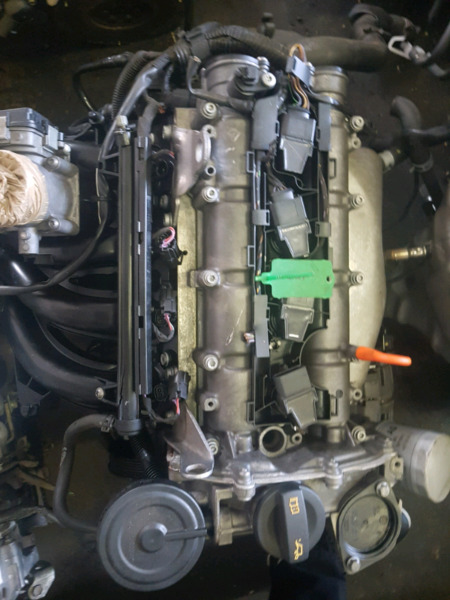The Duty of a Clp Engine in Revolutionizing Engine Performance and Sustainability
The introduction of CLP engine technology presents a critical moment in the automobile industry, where performance and sustainability merge in unprecedented ways. By enhancing combustion processes and allowing for vibrant adjustments in compression ratios, these engines not only promise enhanced fuel performance and minimized exhausts however also challenge traditional design standards.
Understanding CLP Engine Innovation
As the automotive sector constantly seeks ingenious options to improve effectiveness and efficiency, understanding CLP engine innovation becomes crucial. The term CLP represents Compression-Low Pressure, an advanced engine layout that concentrates on optimizing burning procedures and minimizing discharges. This technology operates by maintaining a low-pressure setting within the combustion chamber, which promotes a much more complete fuel burn and minimizes unburned hydrocarbons.
Among the crucial features of CLP engine innovation is its capacity to readjust the compression ratio dynamically. This adaptability enables the engine to run effectively across various driving conditions, boosting gas economic climate while at the same time boosting power output. In addition, CLP engines take advantage of progressed materials and design concepts to minimize weight and thermal losses, further adding to general efficiency.
Additionally, the assimilation of electronic control systems plays a vital duty in taking care of the engine's efficiency parameters. These systems enable real-time adjustments to ignition timing and fuel injection, enhancing combustion for both power and efficiency. By recognizing CLP engine innovation, stakeholders in the automobile industry can much better value its capacity in driving the future of engine style, efficiency, and sustainability.
Performance Enhancements Offered
CLP engine innovation supplies substantial performance improvements that set it apart from typical engine designs. Among the main benefits of CLP engines is their capability to run effectively throughout a wider variety of rates and lots. This versatility translates into improved torque delivery and acceleration, providing a more receptive driving experience.
Furthermore, the innovative burning procedure utilized in CLP engines optimizes fuel-air mixing, leading to greater thermal efficiency. This enhancement not only takes full advantage of power output however additionally minimizes energy loss, causing an engine that carries out much better under various problems.
Furthermore, the modular architecture of CLP engines permits for easier integration with hybrid systems, intensifying their efficiency potential - clp engine. This versatility enables makers to create vehicles that satisfy consumer requirements without sacrificing agility or power
The precision design associated with CLP modern technology also adds to lower friction and wear, enhancing engine durability and reducing the frequency of upkeep. Overall, these performance enhancements position CLP engines as a leading selection in the search of high-performance, reputable, and functional engine options.
Environmental Advantages of CLP Engines
One of one of the most compelling advantages of CLP engines exists in their environmental advantages, which are progressively crucial in today's vehicle landscape. These engines are designed to maximize gas performance, considerably reducing carbon exhausts contrasted to traditional burning engines. By using innovative burning strategies and cutting-edge products, CLP engines promote cleaner exhaust outputs, adding to enhanced air top quality.
Furthermore, the reduction in gas intake not only brings about decrease greenhouse gas emissions but also preserves valuable natural sources. As nonrenewable fuel source reserves diminish, the change towards CLP modern technology stands for a calculated step this in the direction of sustainability. The engines are typically compatible with alternate fuels, additionally improving their ecological appeal and enabling a varied power portfolio.
Additionally, the light-weight layout of CLP engines helps reduce vehicle weight, which subsequently lowers the power required for propulsion. This leads to reduced functional energy intake and a reduced environmental footprint. In summary, CLP engines stand at the leading edge of initiatives to reduce environment change and advertise lasting practices in the vehicle field, symbolizing a future where performance and environmental responsibility are not equally exclusive.
Comparison With Standard Engines
While traditional engines have lengthy dominated the automotive industry, the introduction of CLP technology offers a considerable change in efficiency and performance. Conventional internal combustion engines mostly depend on gas combustion, which not only limits thermal efficiency yet also adds to higher emissions. In comparison, CLP engines use sophisticated thermal management and a special burning procedure, improving gas performance and significantly lowering greenhouse gas emissions.
Furthermore, typical engines operate fixed power curves, which can impede performance in differing driving conditions. CLP engines, however, are created to adapt their efficiency dynamically, providing read more optimal power shipment based on real-time demands. This versatility results in improved acceleration, responsiveness, and total driving experience.
Upkeep additionally varies significantly; typical engines frequently call for regular oil modifications and component replacements due to damage. clp engine. CLP engines, with less relocating parts, guarantee decreased upkeep needs and longer functional life expectancies

Future Leads and Innovations
As the vehicle landscape evolves, the future of engine technology is significantly concentrated on technologies that boost performance and sustainability. The Clp engine, with its special architecture and operational effectiveness, is poised to play a pivotal duty in this change. Future growths might involve advancements in materials scientific research, allowing the construction of lighter and a lot more resilient components, therefore decreasing general automobile weight and improving fuel efficiency.
Moreover, the combination of expert system and machine understanding into engine monitoring systems is anticipated to enhance efficiency dynamically, enabling real-time modifications based on driving problems. These advancements can even more lessen emissions and boost power utilization.
In addition, study right into alternate fuels, consisting of hydrogen and biofuels, presents amazing possibilities for Clp engines, aligning performance with environment-friendly initiatives. clp engine. As regulatory structures end up being stricter, the fostering of such technologies will certainly be critical in accomplishing sustainability objectives without compromising power
Conclusion
